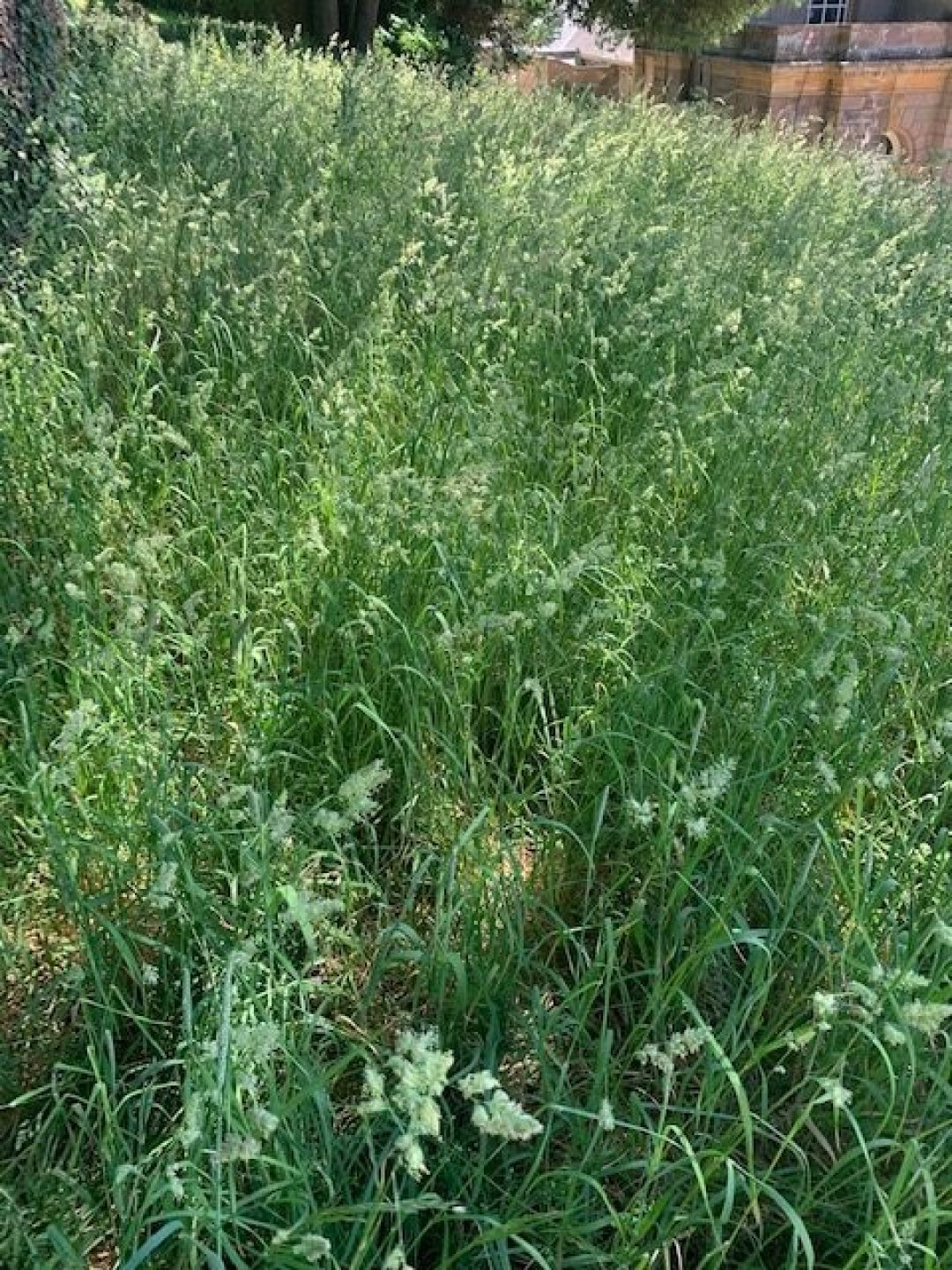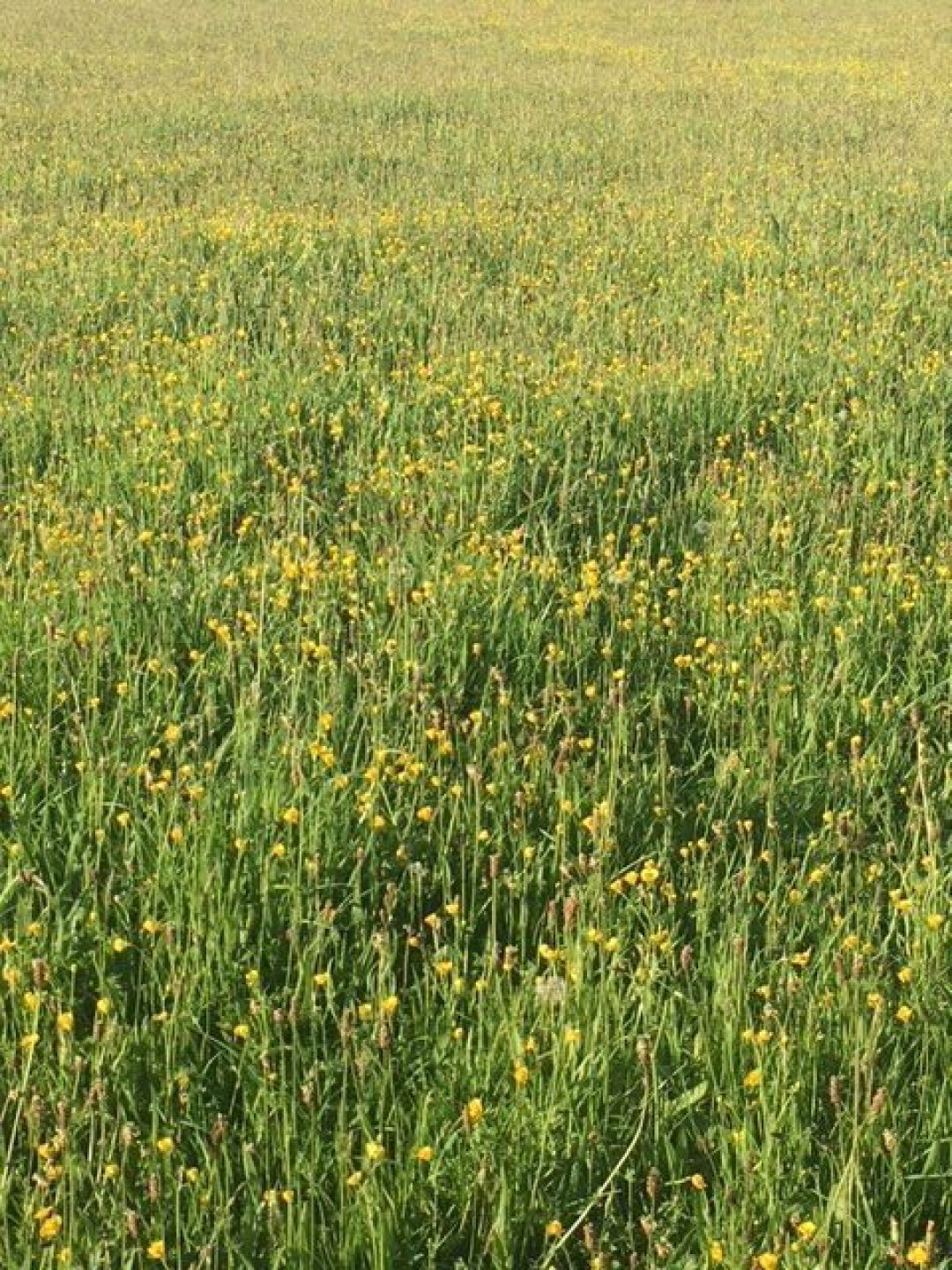Notice
Please be aware that Hestercombe will be closed on Christmas Day and Boxing Day, but will be open daily throughout the rest of the Christmas holidays.
No Mow May ~ can you resist your mower for one month to help insect life in the UK?! Head Gardener Claire Greenslade sets you a challenge...
Please be aware that Hestercombe will be closed on Christmas Day and Boxing Day, but will be open daily throughout the rest of the Christmas holidays.
No Mow May is an initiative set up by Plant Life, a charity that aims to promote the conservation of plants and habitat, and to increase awareness of the value of plants.
They're asking for gardeners across the country to put away the lawnmower for the month of May to allow wildflowers to flower within lawns, and I am happy to support a campaign that asks you to stop working! In fact if you're keen, this could lead to Let It Bloom June, and Knee High July!
As we know, insect life in the UK has been in decline for many years now across the UK. Plant Life undertook a citizen survey called Every Flower Counts, which looked at garden lawns to assess the diversity of wild plants within them. When we mow our lawns we cut off all but the very low growing flowers, which basically means that we're mowing off ‘dinner’ for the insects. As the plants never get to flower, the insects are robbed of their valuable nectar. The study found that leaving areas of lawn to grow longer meant that the diversity of flowers increased, as did the amounts of nectar available.


There are two ways to achieve this to help two groups of plants. One is to mow once a month and keep your lawn at 2-3 inches. This gives low growing flowering plants such as daisy and clover a chance to flower. The other option is to leave a whole area over the summer and cut back in autumn. This gives species such as Scabious, Knapweed and Ox eye daisy a chance to flower. In an ideal world if you can provide both types of habitat, even on a tiny scale, it will make a massive difference. You could still keep your beautiful formal stripped lawn but just leave a strip at the bottom to bloom.
With our insect life in such great decline this will make a huge difference, and it’s not just about the bees and butterflies, it’s the knock on effect to other species such as birds and bats that feed off the insects, and the ladybird larva keeping our aphids under control.
During the 2020 lockdown our garden team of staff and volunteers was drastically reduced and at some points it was only myself and Ben Knight on site. We had to make some pretty quick decisions in order to prioritise. Any areas that could be ‘mothballed’ were. This meant that we did less strimming and less tidying. We kept the formal areas mowed but we had to learn to relax and let go a bit in other areas, and the results were PHENOMENAL.
In fact last year has made me totally rethink the management of the gardens and made us realise what a position of power we were in to help wildlife. We had more seed heads from less maintenance, which meant there was more to feed on. We had goldfinches nesting in the roses in the formal garden because they had such a great food source nearby. We saw more butterflies, and the scarlet tiger moth, a striking red and black day flying moth, increased its numbers as we had left more green alkanet which is its caterpillars food source. We had no aphid problems as nature had its own soldiers here to deal with that. We had more slow worms because we weren’t being as tidy as normal so they had better habitats. We even saw stoats playing in the garden. The food source available to our rare Lesser Horseshoe Bats must have increased dramatically.
So I can really vouch for this. It works...we witnessed it!
So this year we will mow the west side of the formal garden and the box pond lawn (where the Richard Long sculpture sits) to a minimum height of 3 inches. We will leave the orchard areas and the daisy steps long and we will leave the car park until autumn. We have even been growing from seed plants like birds foot trefoil, geranium, and toadflax to add to some wilder areas.
You too could become a citizen scientist! Plant Life are looking for people to help with a survey called Every Flower Counts which asks people to record the plant species growing in lawns between the 22nd-31st May.
Not everyone has a garden at home, so we'd like to invite you to come to Hestercombe and see what's in our lawns this May.
Use the guide below to help you count out the flowers.
Look at an area of roughly 1 metre by 1 metre and notice the different types of flower in bloom in your lawn. Are there daisies? Are there dandelions? Have you got selfheal or buttercups, or even meadow crane’s-bill in flower?
Plant Life are asking you to count the number of open flowers on 26 of our most common lawn flowers. Use Plant Life's ID guide to help identify them.
Thirteen of the flowers are common in typical lawns that are mown a few times throughout the year.
The other thirteen are often found in lawns that are left unmown until late summer or autumn.
For each species, count the number of open flowers (not unopened flower buds) you find within your quadrat.
Check the Plant Life ID guide first to show you exactly what to count:
Now let Plant Life know what you’ve found by registering and submitting your results on the Plant Life website.
Described as “one of the top twenty gardens to visit in the country”, Hestercombe is always beautiful throughout the year. Join today and enjoy great value: unlimited access to Hestercombe with prices from £4.21 per month.
Give a Gift of Membership to friends and family and they too can enjoy all the benefits of membership.
